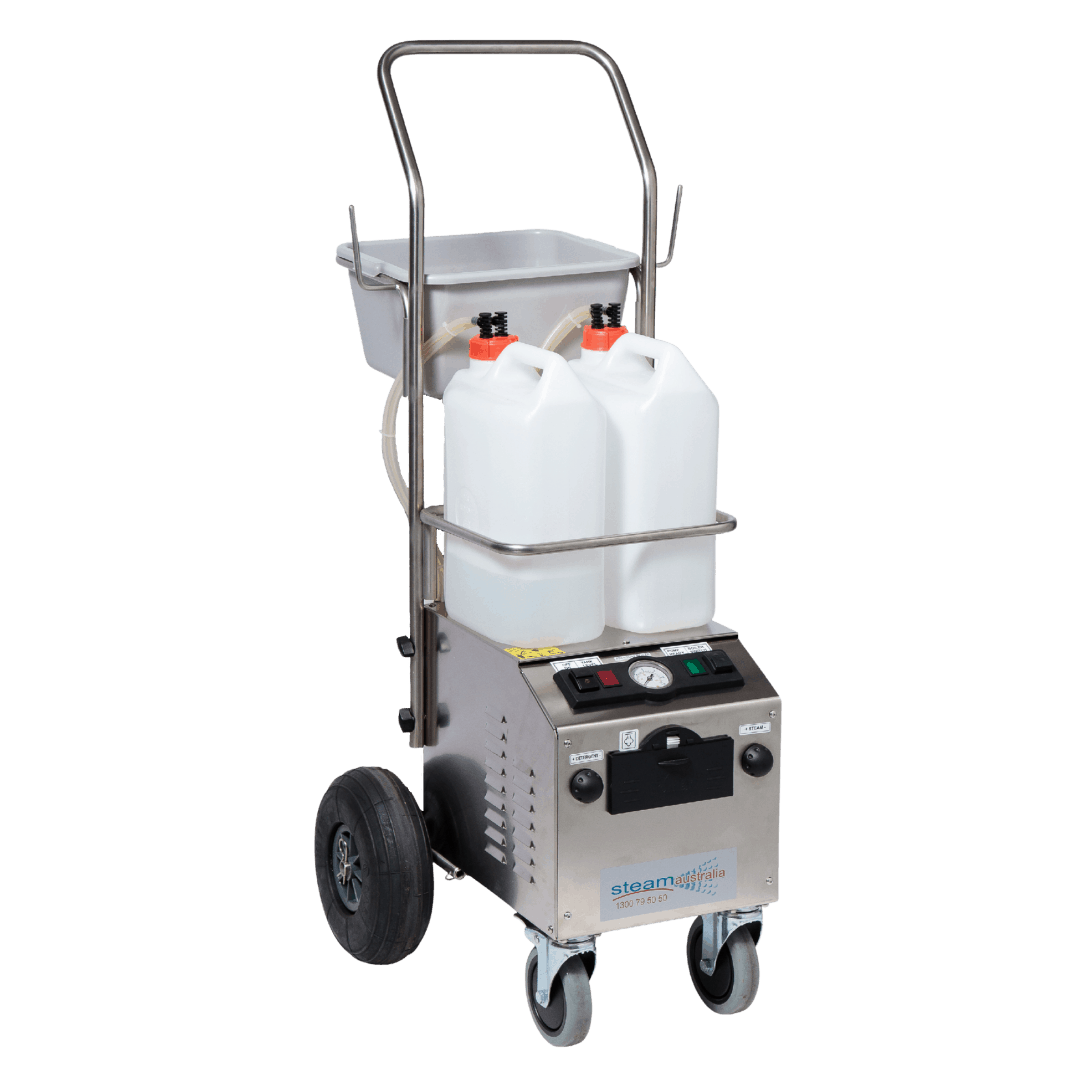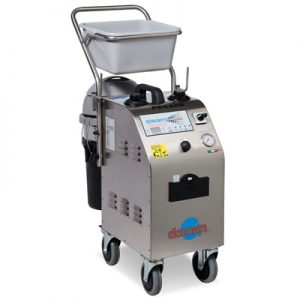
Dry Steam Sanitising In Hospitality
The hospitality industry includes a vast array of businesses demanding endless applications for dry steam sanitising. Restaurants, Hotels, Pubs, Clubs, Tourism, Catering and more.
Dry steam sanitising is a cost effective and time saving cleaning method killing >99.999% of bacteria & viral agents.*. All departments within the hospitality industry can benefit from the improved results provided by the use of dry steam. From housekeeping to cleaning a commercial kitchen in a bakery, ensure that infection control and visual cleanliness is always as its best for your customers, residents and staff.





Using a maximum of 5 litres of water per hour, dry steam will deep clean far more effectively than traditional methods. Using high temperature dry saturated steam generated at over 170º in the boiler. This superheated dry steam has a moisture content of only 5%, allowing the steam to penetrate deep below the surface, easily removing dirt, grease and grime from otherwise unreached areas.
As the steam is hitting the surface at well over 100 degrees celsius, it not only leaves the surfaces clean, it sanitises and deodorises without the use of chemicals. Dry steam also leaves minimal water residue behind, allowing you to either wipe away with microfibre or switch on the vacuum function – leaving surfaces clean, dry and ready for use.
With ‘steam only’ and ‘steam and vacuum’ machines available for your industry we can tailor the perfect package for your Hospitality business’ needs.
Commonly used in:
Why Dry Steam Cleaning for Hospitality?

Economical

Easy & Efficient

Environmentally Friendly

We recommend the following machines
from our range for Hospitality applications.

FAQ's
Are there any PPE requirements?
If cleaning is being performed in an area suspected of being contaminated with a virus the appropriate PPE should always be worn. Introducing a dry steam cleaner does not require additional PPE.
Can steam vapour aerolize pathogens?
No, the research does not support this. Our machines reach >170°C. Both Monash Health and the NHS in England have tested dry steam to see if it can spread anything. They tested this by sampling the air, vapour and additionally placed settle plates around the room and found that the steam did NOT spread anything.
Can our dry steam units kill COVID-19?
Professor Bloomfield from UNLV says “to actively kill the virus you need temperatures of around 60 degrees [Celsius]”. Our machines are heated to >176°C drastically reducing the contact time required.
Dry steam sanitising is also the recommended process for sanitising a viral agent of any soft furnishings or carpet by the Australian Government and specifically against COVID-19 by the United Kingdom Government.
Can I use any microfibre?
No. You should always use a microfibre cloth proven to remove at least 99.9% of micro-organisms. Most microfibre commercially available do not meet these standards.
Disposable microfibre is always recommended in the case of an infectious organism.
Steam Australia can supply suitable microfibre which has been proven within hospitals for use with our machines.
Who recommends steam cleaning?
The Australian Governments guidelines provided by the CDNA recommend dry steam sanitising soft surfaces and carpets in the event of viral agents. This recommendation is inline with governments around the world.
The UK government recommends steam specifically against Covid-19.
How often should I clean?
Surfaces and frequently touched points should be steam sanitised every 24hours.
Should I use vacuum or just steam?
It is recommended that in most cases just steam or steam and microfibre is used. Special consideration can be given to use a vacuum in certain circumstances – in this case you should ONLY use vacuums with HEPA filtration.
Can steam be used on other surfaces?
Yes, our machines can be used on nearly any surface. Our dry steam cleaners and recommended microfibre cloths are being used as the sole cleaning method in hospitals within Australia and New Zealand. Combining these two cleaning technologies has seen a statistically significant improvement on achieving a reduction in hospital acquired infections and improved cleaning efficacy. These results are consistently inline with expectations regardless of the size or purpose of the facility, hospitals also consistently report a significant reduction in costs, cleaning times, staff fatigue and WHS claims as well as a significant improvement in visual and microbiological cleaning results.





